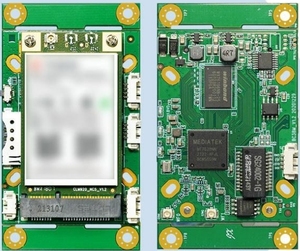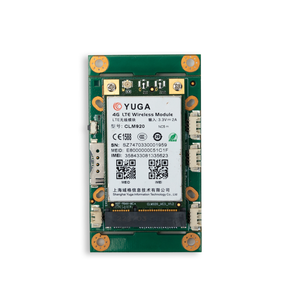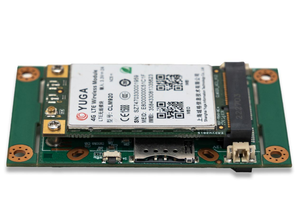
All categories
Featured selections
Trade Assurance
Buyer Central
Help Center
Get the app
Become a supplier

(1112 products available)

















































There are various embedded router modules. They include:
Mobile Embedded Router Modules
This type of router utilizes cellular networks to provide internet connectivity. Even without direct access to conventional wired broadband systems, they frequently contain built-in documentation for 4G LTE and occasionally 3G. Enterprises with remote workers, moving vehicles, or far-off places needing stable connection will benefit from these modules. Mobile embedded router modules are essential for real-time communication and data transfer in sectors like logistics, transportation, and public safety due to their small size and capacity to support wide networks.
Satellite Embedded Router Modules
Unlike many other modules, which mostly depend on terrestrial networks, satellite embedded router systems use satellite communication for connectivity. They are advantageous in regions where conventional broadband networks are inaccessible, such as maritime, aviation, and remote land operations. Such modules are built to work with satellite networks and provide dependable coverage over large distances. They can support mission-critical applications requiring constant communication, even in locations cut off from standard infrastructure.
Wi-Fi Embedded Router Modules
Modules for embedded routers with Wi-Fi functionality commonly offer local area network (LAN) connectivity through wireless connections. They are often found in settings like offices, schools, or public spaces where quick access to broadband is a requirement. Businesses may facilitate client or employee connection to the internet by integrating Wi-Fi capabilities into their products or systems. These modules can be an integral part of Internet of Things (IoT) networks, where numerous devices need to communicate over a wireless connection.
DSL/Cable Embedded Router Modules
These specific parts are intended to enable routers to connect to existing digital subscriber line (DSL) or cable broadband networks. Standard cable router modules for embedded systems are quite helpful for organizations wanting to leverage current wired broadband infrastructure since they are designed to interface with cable modem systems. On the other hand, DSL modules connect to phone lines for internet access. These are found in enterprises where stable, high-speed wired connections are still essential.
The main purpose of embedded operating system router modules is to serve as key internet connection intermediaries.
All these features increase dependent businesses' operational efficiency.
Good quality materials combined into a strong, durable design increase longevity.
Hierarchical and operational control of the manufacturing processes of machines and production systems in an industrial setup is called industrial automation. For smooth communication among machines, embedded router modules become especially critical in industrial places with numerous smart devices linked through the IoT. In factories, for example, these routers enable the real-time transmission of data between sensors, control units, and monitoring systems. They enhance the efficiency of operations while lowering downtime by rapidly routing data across varied industrial communication networks. Moreover, with their secure data transmission capabilities, embedded routers protect enterprises' sensitive manufacturing information from possible cyber threats.
Most businesses today rely on effective remote monitoring systems to ensure performance, safety, and the reliability of their assets. Wireless embedded router modules serve as the foundation for such systems by enabling organizations to watch and control objects in real time, no matter how far away. For instance, in the oil and gas, utilities, and logistics industries, these modules continuously transmit data from sensors on pipelines, electrical grids, or transport vehicles to central monitoring hubs.
This gives rise to a proactive and pre-emptive troubleshooting routine. Because of the routers' high-speed data transfer and dependable connection, businesses may optimize their resource management while decreasing physical site inspections and, at the same time, increasing operational effectiveness.
Smart buildings, including intelligent lighting, heating, security systems, and more, form a network to provide efficiency and convenience. Embedded router modules help integrate and control these various systems within these structures. These routers' multiprotocol support enables smooth communication between conventional infrastructure components and contemporary digital systems. This results in enhanced energy savings, better space utilization, and an improved occupant experience. In commercial real estate and hospitality industries, such systems are important since they increase tenant satisfaction and operational efficiency.
Embedded routers are becoming more popular in the healthcare sector due to the rapid rise of telemedicine and e-health solutions. These modules allow doctors to monitor patients in real time by safely linking medical devices like wearable sensors to centralized healthcare information systems. Due to their low power consumption and small size, embedded routers can be integrated into portable medical systems that offer patients continuous diagnostic monitoring. These routers, with strong data transmission and security features, guarantee patients' personal medical information safety while enabling real-time healthcare delivery. The efficiency and quality of healthcare services are significantly enhanced by integrating connected healthcare solutions, which also allows cost optimization.
The transportation and logistics sector heavily depends on always-connected systems for fleet management, cargo tracking, and route optimization. Embedded router modules provide real-time data transmission between moving cars and control centers. For example, it allows complete visibility into fleet performance, location, and condition. These routers enable continuous communication with remote places by supporting cellular and satellite networks. This leads to improved decision-making. Also, their security elements protect critical business and customer information while enabling smooth communication. These modules effectively facilitate mission-critical applications in an unreliable environment.
Security Features
It is essential to consider the embedded router's security features. Secure access control, data encryption, and intrusion detection are standard security protocols in modern cyber threat mitigation systems. Furthermore, the embedded router module's hardware-based security components, such as secure boot and trusted platform units, may aid in reinforcing the router against many attack vectors. These elements safeguard not only the router but also any linked devices, ensuring safe operations in sensitive environments like healthcare and finance, where data confidentiality is crucial.
Protocol Support
Different commercial and industrial devices communicate using diverse communication protocols. Thus, it is advisable to check the router module for protocol support. For example, Internet of Things (IoT) applications may require the module to support MQTT or CoAP. However, traditional network systems might need the more common TCP/IP suite. Selecting a module with broad protocol support guarantees seamless interaction across numerous devices. This, in turn, helps in maintaining operational continuity across diversified network settings.
Customization Options
Various businesses might have different degree operation hardships. Choosing a customizable embedded router module is key to helping the router's firmware, security mechanisms, and network management features meet particular needs. Customization enables enterprises to modify the router's features in response to business development and emerging threats, maintaining network protection and efficiency. Moreover, a customized router can integrate seamlessly with other systems and software, therefore improving workflow and resource utilization.
Environmental and Usage Conditions
To select the right embedded router mobile modules, consider the environment and use-case conditions. Outdoor routers, for instance, should be suited for severe weather with stronger casings and additional waterproofing functions. On the other hand, those developed for industrial settings should have resistance to high and low temperatures, dust, and exposure to chemicals. Also, if the router is intended to be used in mobile applications like transportation or vehicle telematics, check whether it can maintain stable connections while moving and has cellular and GPS capabilities.
Interface and Integration
Considerations of the embedded router module's interface and ease of integration into the present systems are crucial in the overall decision. Such modules should have standard application programming interfaces (APIs) and communication protocols to enable easy interaction with existing software and hardware components. Also, the module should come with good documentation and support resources to simplify the integration procedure. The embedded router should be able to minimize downtime and enhance operational efficiency by allowing smooth integration into current infrastructures.
A: Embedded router modules are small computing devices that manage network communications. They connect various systems and devices to the Internet, ensuring they can communicate efficiently and securely.
A: Security features protect sensitive data from cyber threats. They prevent unauthorized access and safeguard valuable information, especially in industries like healthcare and finance, where data confidentiality is crucial.
A: Five key factors come into play. They include the module's security features, protocol support, customization options, environmental suitability, and integration ease.
A: The right embedded router module for outdoor applications should be equipped to handle severe weather. It should also have resistants to high and low temperatures, dust, and chemicals for industrial settings.
A: Protocol support enables seamless device communication. On the other hand, customization allows the module to adapt over time. This will, therefore, help the module meet specific needs as they evolve.
A: A user-friendly interface simplifies network management and troubleshooting. This reduces the time and effort required to maintain the system.